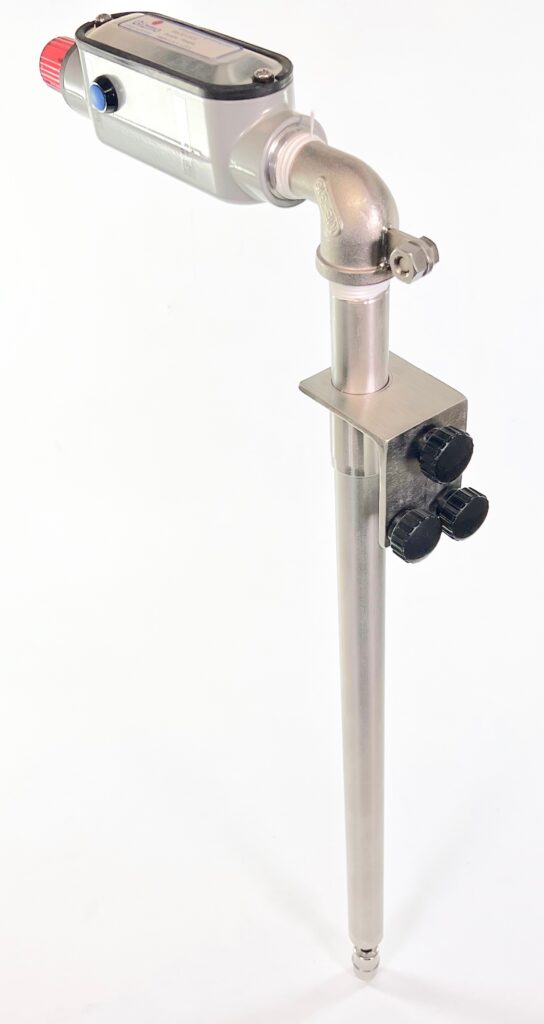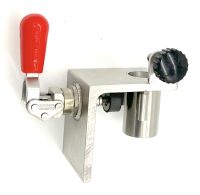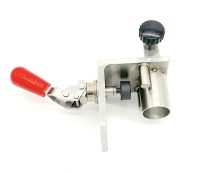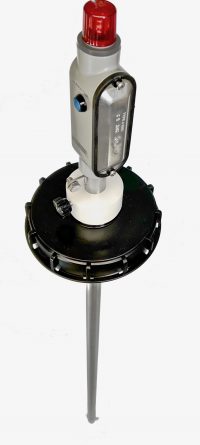This page shows examples of custom alarms and accessories for Class 1, Division Hazardous Locations. The alarm still complies with all the requirements of our certifications. Generally to create a custom Hazloc alarm, the electronics cannot be modified, only the circuit board programming, and the external physical configuration such as the mounting. In addition, we are permitted to modify the type of simple device connected to the electronics enclosure. This is an advantage of the Intrinsically Safe approach to for creating alarms for Hazardous Locations: there is more flexibility allowed since the safety comes from the circuit design – not the enclosure.
TANK TRUCK MOUNT
This customer needed a way to quickly mount and un-mount a level alarm from tanker trucks for a filling operation. The toggle clamp snaps onto the truck rim in one motion. The throat depth is adjustable simply by screwing the rubber bumper in or out. The overfill alarm depth is adjusted using the (black) thumb knob.
Intrinsically Safe level alarm for an IBC tank. Basically one of our tank alarms but with our IBC mount. Easily adjusts to the level an operator wants by loosening a thumbscrew. Can touch the bottom of the tank without damage to the float switch because the float is protected inside a stainless steel float guard. Polypropylene black cap with Polyethylene drum Plug 2″ NPS. Santoprene gasket to seal IBC cap to the IBC.

This example of a custom alarm for hazardous location is a “low headroom” tank alarm. (base model IS-T-SS) It had to fit in a small space over the tank so we mounted the electronics enclosure at a 90º angle. There is an adjustable rim-mount bracket to adjust the depth in the tank. The LED is pointed horizontally which is different from our usual vertical mounting. However in this case it would be pointed straight at the operators. This unit is the first to use a 316 stainless steel grounding lug. Previously we used 304 stainless and found that there was some corrosion. A pilot unit run along with the order was subjected to a 3-day salt fog test and showed no corrosion.



